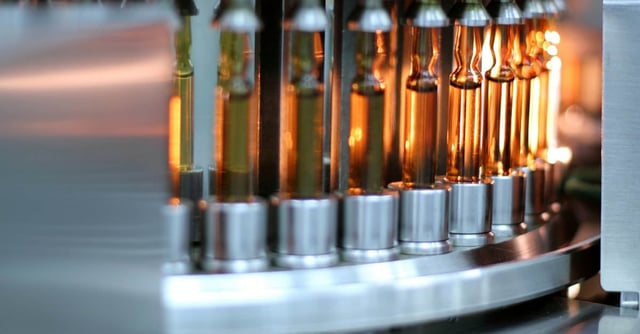At Eficode we are currently discovering how the pattern recognising technologies can be used in the health industry to support human decisions. Read more!
You probably all remember the scene from Star Wars Episode IV: A New Hope where R2-D2 in the last moment saves Luke, Leia, Han and Chewbacca from being garbage disposal 3263827 at the Death Star. R2-D2 was able to save human life because it got access to critical information (the number on that specific garbage disposal) at the right time. This is just one out of many examples - at least in movies and fiction - where they help save lives.
But can robots and new technology already help save lives today? The answer is YES.
Thinking of the sad situation, that happened in Denmark last New Year's Eve where a 17 year old boy died from meningitis because he wasn’t treated in time. The apparent reason being that he wasn't treated in time due to a mistake from the personnel at the Danish equivalent of 911.
Today, there are many examples of technologies, that can understand, analyse and handle information given through the phone. This can be done in real-time while the phone call is happening. Using one of these technologies might have increased the boy's chances of survival.
The employees at the Emergency Department are educated to know numerous symptoms. However, one must acknowledge that it can be difficult for the employees - even for doctors - to remember all symptoms and possible disease. Especially in cases of rare diseases.
If a ‘robot’ had been listening to the first phone call by the 17 year old boy to the Emergency Department, it could have started an alarm right away when the black spots in the skin was mentioned. Thereby an ambulance could have been sent right away with penicillin to the patient and a life might have been saved.
It will take many years until robots will replace the jobs of doctor's. However, today robots and new technologies can help nurses and doctors by allying a new layer of intelligence on top of their already large knowledge.
At Eficode we are currently discovering how the pattern recognising technologies can be used in the health industry to support human decisions. This discovery is divided into several phases. We have delivered technology and knowledge to a group of students at DTU (The Technical University of Denmark), as part of their final project. They wish to discover how the combination of Big Data and pattern recognition can assist doctors to diagnose patients.
The idea behind the project is scan a large amount of patient files alongside with verified diagnoses in a large dataindex. The system would hereby we able to assess which symptoms fits with which diagnosis due to the large amount of knowledge the data is providing.
When a user of the system (a doctor) plug in the symptoms into system it will automatically indicate how likely a patient is to carry a certain disease on a scale from 0% to 100%. The system is thereby not one to make decisions nor replace the doctors but a help to assist them when diagnosing fx. in case of rare diseases.
Further, Eficode have a collaboration with a major technology supplier within the health industry begun an investigation on a similar project. The aim with this project is to examine how pattern recognition can assist doctors when consulting the patient in order to secure that the patient is being referred to the examination, scanning etc. in a fast and direct manner.
The first pilot of the system is to show efficiency with 80% of the patients where the diagnosis is a given and where there is no doubt about what kind of visitation the patient needs. This will give the doctors an opportunity to focus on the 20% more complex cases where the diagnosis is not a given. The upside of implementing such systems is that it will provide more efficient visitations while and that the doctors will get more time for the complicated cases.
An additional advantages is the cost reductions at the hospitals will get from the more effective treatment of the patient, which results in less days in the hospital beds and a reduction in the cost of unnecessary examinations.
What do you think of using technology for such purposes? Will it improve or worsen the overall quality of the health industry? What does the future hold? Give us your opinion!
Published: Mar 23, 2017
Updated: Mar 25, 2024


